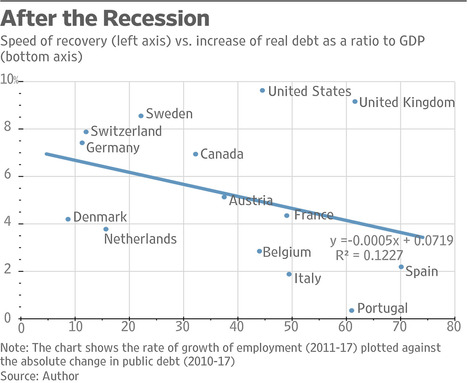(p. 1) MUNICH — Dr. Camilla Rothe was about to leave for dinner when the government laboratory called with the surprising test result. Positive. It was Jan. 27 [2020]. She had just discovered Germany’s first case of the new coronavirus.
But the diagnosis made no sense. Her patient, a businessman from a nearby auto parts company, could have been infected by only one person: a colleague visiting from China. And that colleague should not have been contagious.
The visitor had seemed perfectly healthy during her stay in Germany. No coughing or sneezing, no signs of fatigue or fever during two days of long meetings. She told colleagues that she had started feeling ill after the flight back to China. Days later, she tested positive for the coronavirus.
. . .
Dr. Rothe and her colleagues were among the first to warn the world. But even as evidence accumulated from other scientists, leading health officials expressed unwavering confidence that symptomless spreading was not important.
In the days and weeks to come, politicians, public health officials and rival academics disparaged or ignored the Munich team. Some actively worked to undermine the warnings at a crucial moment, as the disease was spreading unnoticed in French churches, Italian soccer stadiums and Austrian ski bars. A cruise ship, the Diamond Princess, would become a deadly harbinger of symptomless spreading.
. . .
(p. 10) Though estimates vary, models using data from Hong Kong, Singapore and China suggest that 30 to 60 percent of spreading occurs when people have no symptoms.
. . .
After two lengthy phone calls with the woman, doctors at the Robert Koch Institute were convinced that she had simply failed to recognize her symptoms. They wrote to the editor of The New England Journal of Medicine, casting doubt on Dr. Rothe’s findings.
Editors there decided that the dispute amounted to hairsplitting. If it took a lengthy interview to identify symptoms, how could anyone be expected to do it in the real world?
“The question was whether she had something consistent with Covid-19 or that anyone would have recognized at the time was Covid-19,” said Dr. Eric Rubin, the journal’s editor.
“The answer seemed to be no.”
The journal did not publish the letter. But that would not be the end of it.
. . .
On Monday, Feb. 3, the journal Science published an article calling Dr. Rothe’s report “flawed.” Science reported that the Robert Koch Institute had written to the New England Journal to dispute her findings and correct an error.
. . .
Dr. Rothe’s report quickly became a symbol of rushed research. Scientists said she should have talked to the Chinese patient herself before publishing, and that the omission had undermined her team’s work. On Twitter, she and her colleagues were disparaged by scientists and armchair experts alike.
“It broke over us like a complete tsunami,” Dr. Hoelscher said.
. . .
If Dr. Rothe’s paper had implied that governments might need to do more against Covid-19, the pushback from the Robert Koch Institute was an implicit defense of the conventional thinking.
Sweden’s public health agency declared that Dr. Rothe’s report had contained major errors. The agency’s website said, unequivocally, that “there is no evidence that people are infectious during the incubation period” — an assertion that would remain online in some form for months.
French health officials, too, left no room for debate: “A person is contagious only when symptoms appear,” a government flyer read. “No symptoms = no risk of being contagious.”
. . .
(p. 11) Dr. Rothe, . . ., was shaken. She could not understand why much of the scientific establishment seemed eager to play down the risk.
“All you need is a pair of eyes,” she said. “You don’t need rocket-science virology.”
. . .
While public health officials hesitated, some doctors acted. At a conference in Seattle in mid-February, Jeffrey Shaman, a Columbia University professor, said his research suggested that Covid-19’s rapid spread could only be explained if there were infectious patients with unremarkable symptoms or no symptoms at all.
In the audience that day was Steven Chu, the Nobel-winning physicist and former U.S. energy secretary. “If left to its own devices, this disease will spread through the whole population,” he remembers Professor Shaman warning.
Afterward, Dr. Chu began insisting that healthy colleagues at his Stanford University laboratory wear masks. Doctors in Cambridge, England, concluded that asymptomatic transmission was a big source of infection and advised local health workers and patients to wear masks, well before the British government acknowledged the risk of silent spreaders.
The American authorities, faced with a shortage, actively discouraged the public from buying masks. “Seriously people — STOP BUYING MASKS!” Surgeon General Jerome M. Adams tweeted on Feb. 29.
. . .
By the end of the month [March 2020], the U.S. Centers for Disease Control announced it was rethinking its policy on masks. It concluded that up to 25 percent of patients might have no symptoms.
Since then, the C.D.C., governments around the world and, finally, the World Health Organization have recommended that people wear masks in public.
Still, the W.H.O. is sending confusing signals. Earlier this month, Dr. Van Kerkhove, the technical lead, repeated that transmission from asymptomatic patients was “very rare.” After an outcry from doctors, the agency said there had been a misunderstanding.
“In all honesty, we don’t have a clear picture on this yet,” Dr. Van Kerkhove said. She said she had been referring to a few studies showing limited transmission from asymptomatic patients.
Recent internet ads confused the matter even more. A Google search in mid-June for studies on asymptomatic transmission returned a W.H.O. advertisement titled: “People With No Symptoms — Rarely Spread Coronavirus.”
For the full story, see:
(Note: ellipses, and bracketed dates, added.)
(Note: the online version of the story was updated June 27, 2020 and has the title “How the World Missed Covid-19’s Silent Spread.”)


